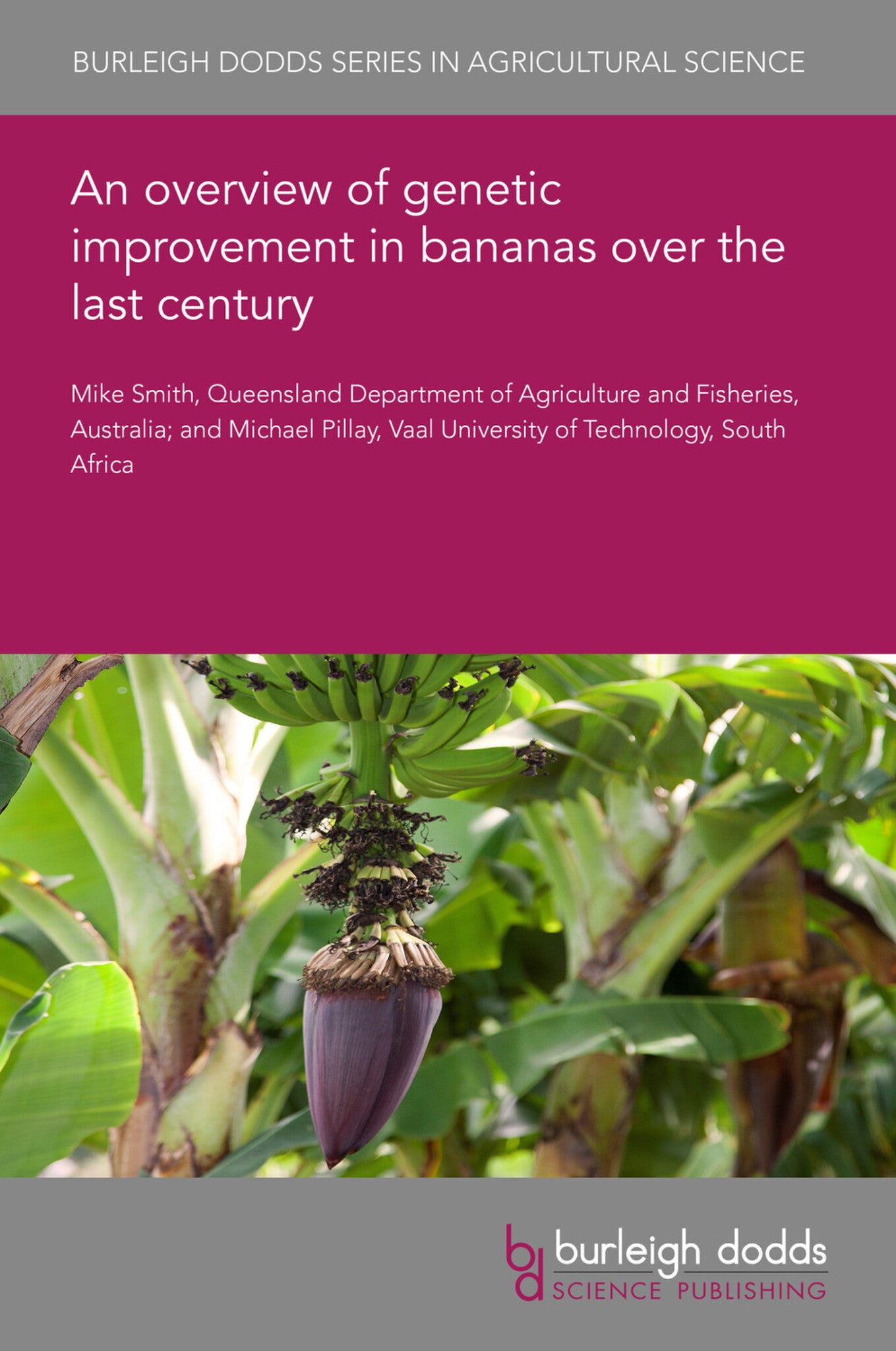We're sorry. An error has occurred
Please cancel or retry.
An overview of genetic improvement in bananas over the last century
Regular price
£25.00
Sale price
£25.00
Regular price
£25.00
Unit price
/
per
Sale
Sold out
Re-stocking soon
Bananas were among the first crops cultivated by man and continue to be important for the livelihoods of millions of people throughout the tropics and subtropics. Yet many cultivars and landraces a...
Read More

Some error occured while loading the Quick View. Please close the Quick View and try reloading the page.
Couldn't load pickup availability
- Format:
-
23 November 2020

Bananas were among the first crops cultivated by man and continue to be important for the livelihoods of millions of people throughout the tropics and subtropics. Yet many cultivars and landraces are susceptible to biotic and abiotic stresses. Genetic resistance to diseases and pests is the best form of crop protection and it is imperative to develop new cultivars that perform well across a variety of changing environments. Currently, the production of improved cultivars with relevant gains in resistance to diseases and pests and other preferred agronomic traits has been accomplished through both conventional and non-conventional breeding. This chapter reviews the various genetic improvement strategies used to develop new banana cultivars and discusses the strategies that have been employed over the last one hundred years. They include hybridization approaches, mutation breeding, genetic transformation and marker assisted selection. The role of genomics and more recent molecular breeding approaches are also discussed.

Price: £25.00
Publisher: Burleigh Dodds Science Publishing
Imprint: Burleigh Dodds Science Publishing
Series: Burleigh Dodds Series in Agricultural Science
Publication Date:
23 November 2020
ISBN: 9781786769367
Format: eBook
BISACs:
SCIENCE / Life Sciences / Horticulture, Commercial horticulture, TECHNOLOGY & ENGINEERING / Agriculture / Sustainable Agriculture, Botany and plant sciences, Sustainable agriculture, Agronomy and crop production

1 Introduction 2 Conventional breeding: evolutionary and reconstructive approaches 3 Non-conventional breeding 4 Marker-assisted selection and mapping 5 Conclusion and future trends 6 Where to look for further information 7 Acknowledgements 8 References



